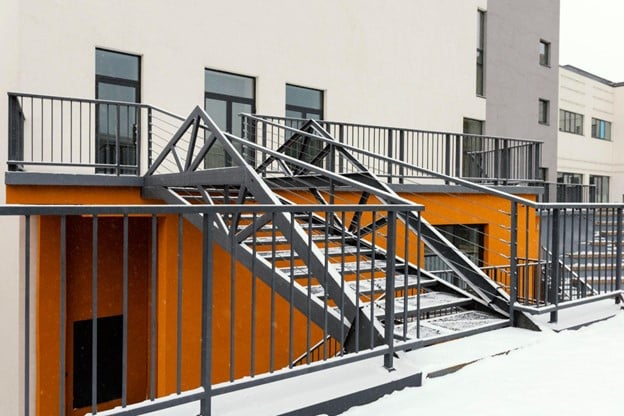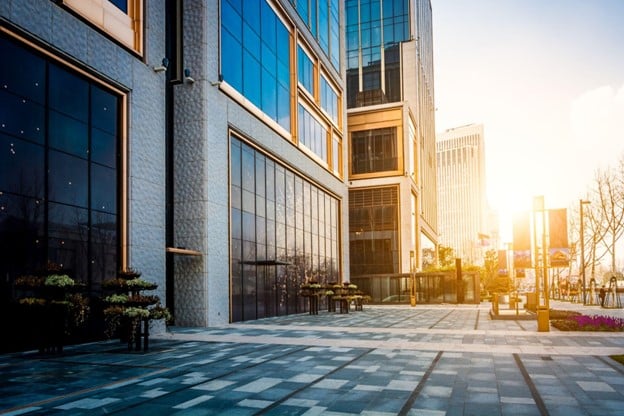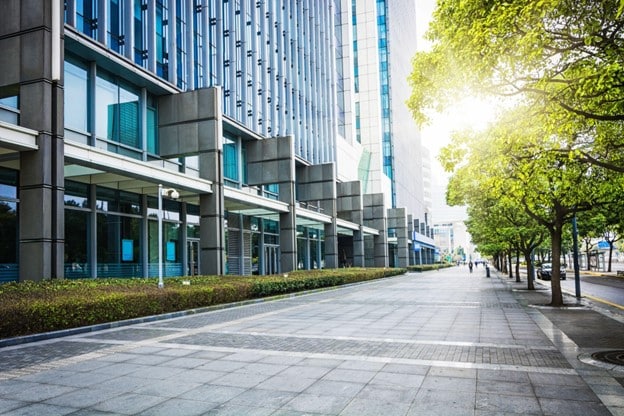In the face of increasing environmental and economic pressures, the world of commercial real estate is changing big time. Now, sustainability is not just a fancy idea on the side – it’s crucial for making buildings sturdy and profitable. Businesses and developers are taking a serious look at how they do things, not just making small tweaks but completely revamping how they design, build, and run buildings. No more of those superficial nods to sustainability – today, leaders in commercial real estate are ditching old ways and putting up buildings that focus on being tough and environmentally friendly.
The Green Building Movement
The tide is turning in commercial real estate, with the green building movement leading the charge towards sustainability. Organizations like the U.S. Green Building Council’s LEED programs provide a roadmap for eco-conscious design, construction, and operation, prominently featuring innovative and sustainable building facades. Businesses seeking LEED certification know it’s not just about energy-efficient lighting and water conservation; it’s about creating a vibrant work environment that reflects their commitment to sustainability. By incorporating types of building facades made from recycled materials, boasting integrated greenery, or maximizing natural light, these companies attract environmentally conscious tenants who value both well-being and a positive public image.
Energy Efficiency and Cost Savings

One of the key drivers behind the growing importance of sustainability in commercial properties is the potential for significant cost savings. Energy efficiency measures, such as smart building technologies, improved insulation, and energy-efficient HVAC systems, not only reduce environmental impact but also lead to lower utility bills for property owners. Additionally, implementing commercial railings systems made from recycled materials or with low-maintenance requirements can further reduce costs and environmental impact.
Investing in renewable energy sources, such as solar panels, has become a popular strategy for commercial property owners looking to generate clean energy on-site. While the upfront costs of installing solar panels can be substantial, the long-term savings on energy bills and potential government incentives make it a financially viable and environmentally responsible investment.
Resilience and Climate Change
As the global climate crisis intensifies, the real estate industry faces increasing challenges related to extreme weather events and changing environmental conditions. Commercial properties are vulnerable to risks such as flooding, hurricanes, and heatwaves, which can result in costly damages and disruptions to business operations.
Sustainable design and construction practices enhance the resilience of commercial properties against these climate-related risks. Green roofs, permeable pavements, and water management systems are among the sustainable features that help mitigate the impact of extreme weather events. Property developers and businesses alike are recognizing the importance of future-proofing their investments by incorporating sustainability measures to adapt to the evolving climate landscape.
Tenant Demand and Corporate Social Responsibility

In today’s market, tenants are increasingly prioritizing sustainability when choosing commercial spaces. Businesses understand the importance of creating a positive and responsible image, and occupying a sustainable building aligns with their corporate social responsibility goals. As a result, property owners who invest in sustainability measures find themselves more attractive to environmentally conscious tenants.
Furthermore, governments and regulatory bodies are introducing policies that encourage or mandate sustainability in commercial properties. Incentives such as tax credits, grants, and expedited permitting processes are becoming more common for property developers who commit to environmentally friendly building practices. These initiatives not only benefit the property owners but also contribute to a broader culture of sustainability within the real estate industry.
Community Engagement and Well-being

Sustainable commercial properties not only benefit the environment and businesses but also positively impact the communities in which they are located. Green spaces, pedestrian-friendly designs, and community engagement initiatives contribute to a higher quality of life for residents and workers in the vicinity.
Commercial developments that prioritize sustainability foster a sense of community well-being by promoting healthier lifestyles and reducing pollution. Additionally, these projects often incorporate socially responsible practices, such as sourcing materials locally and supporting local businesses. As a result, sustainable commercial properties contribute to the overall betterment of the communities they serve.
Green Shift: Why Sustainability is Key for Commercial Real Estate
The growing importance of sustainability in commercial properties reflects a broader shift towards responsible and forward-thinking business practices. As the real estate industry grapples with the challenges posed by climate change and increasing energy costs, embracing sustainability has become a strategic imperative. From energy-efficient technologies to resilient design principles, commercial property developers have a range of tools at their disposal to create buildings that are not only environmentally friendly but also financially sound.
As businesses and consumers alike become more conscious of their impact on the planet, the demand for sustainable commercial spaces is expected to rise. Property developers and owners who prioritize sustainability will not only contribute to a more resilient and environmentally responsible future but will also position themselves as leaders in an industry that is undergoing a transformative shift towards a greener and more sustainable tomorrow.
Sam Willis is a freelance writer that loves sharing his knowledge and expertise in residential and commercial real estate, as well as engineering and construction. He lives in Atlanta, Georgia where he enjoys spending time with his wife and researching real estate trends in his free time. Sam’s work as a freelance writer can be found on Building Product Advisor, a construction industry resource site.






Leave A Comment